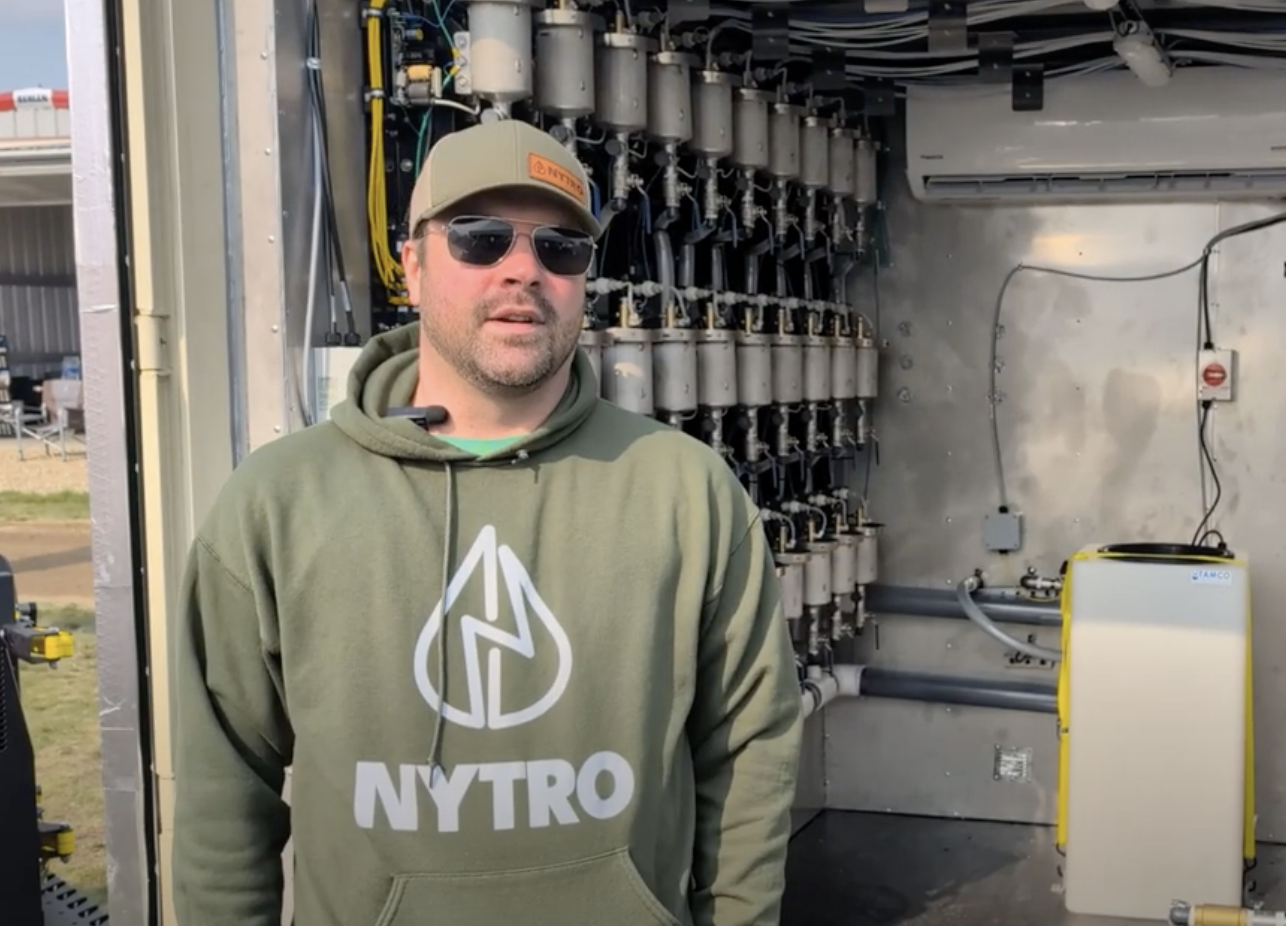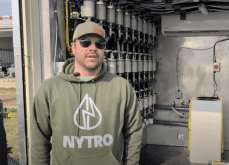Automatic darkening welding helmets are among the welding tools farmers have readily adopted.
The auto-darkening feature has nearly eliminated the little flashes that make welding trickier for many people.
Caleb Krisher of Hobart Brothers, which makes welding equipment, said helmet technology has come a long way in the past 15 years ago.
“The equipment has gotten better at providing safety to the welder, fewer instances of being flashed, faster response times, more sensors,” he said of equipment that automatically darkens its protective glass in as little as 1/20,000 of a second.
Read Also

VIDEO: Green Lightning and Nytro Ag win sustainability innovation award
Nytro Ag Corp and Green Lightning recieved an innovation award at Ag in Motion 2025 for the Green Lightning Nitrogen Machine, which converts atmospheric nitrogen into a plant-usable form.
Tom Sommers of Miller Electric, also a major welding equipment maker, said initially the automatically darkening helmets were bought by professional welders and by high production fabricators and manufacturers.
Farmers initially saw the helmets as too expensive for occasional use.
“We’ve seen agricultural users grow as the products improved and they saw the benefits of better protection,” he said.
Ilie Irinici of Acklands Grainger in Saskatoon, an industrial supply company, said many people who don’t weld as their primary occupation have found the auto darkening helmets make welding more comfortable and improves the quality if their work.
“Being able to see what you are doing from before you start to weld, through forming the weld makes a world of difference. Not staring at a flash spot in your eyes, that is big for anyone who welds,” said the welding specialist.
Irinici said the latest auto darkening helmets are light weight and balanced, which reduces neck strain and tension.
“You can go from weld to grind settings, they are comfortable and very, very safe, offering good eye protection and radiation shielding for the skin,” he said.
The automatically darkening helmets are based on a patented liquid crystal display that can rapidly shift to block a portion of light that is created by a welding arc.
Until recently, the system was based only on optical sensors on the outside of the mask providing a nearly instant response to the first sign of an welding spark.
The first welding helmets to use this had a single sensor and a relatively small optical filter.
Over time, and as the quality of the helmets improved, more and faster sensors were complemented by larger filters, which have variable response times, sensitivities and filter shade, typically from a DIN shade of nine to 13, but as low as five are available in stepped ranges.
Response times are typically about 0.3 millisecond at room temperature.
In the cold, it might react more slowly.
Delays and other features have been added, while helmets have been improved by reducing weight and improving comfort with better suspensions and mounting systems.
Improved battery life of 2,000 hours and better durability have also improved the helmets. Some offer solar powered systems that don’t require battery changes.
Irinici said the more options and the bigger the window, the higher the cost of the helmets, which range from a low of $160 to more than $500.
“We do see some very inexpensive ones on the market sometimes and you need to ask yourself if you want to trust your safety to those,” he said.
He said helmets should be certified by the Canadian Standards Association.
Cheaper versions may also have poorer optics and may not provide even shielding across the glass surface. These may also have lower reaction times, below 1/15,000 of a second.
Top of the line helmets offer as many as four sensors, making it difficult to be welding in a position where at least one will not be in a line of sight to the arc and cause the screen to darken.
Electromagnetic switching, or X mode is the latest technology when it comes to arc triggering. In bright sunlight where optical systems can be fooled, the X mode system can’t. It can be signaled by other nearby electric welding systems, but otherwise it guarantees flash-free operation because it is triggered by the electromagnetic disturbance created by the flow of electricity at the arc.
Premium helmets also trigger at low amperage, making them ideal for TIG welding that can fool cheaper systems.
Other options include improved ventilation systems and side windows for peripheral vision.
Krisher said graphics on the helmets have also changed over the years.
“There are a lot of options when it comes to appearance. Nearly any interest is covered. Some a lot of fun.”
















